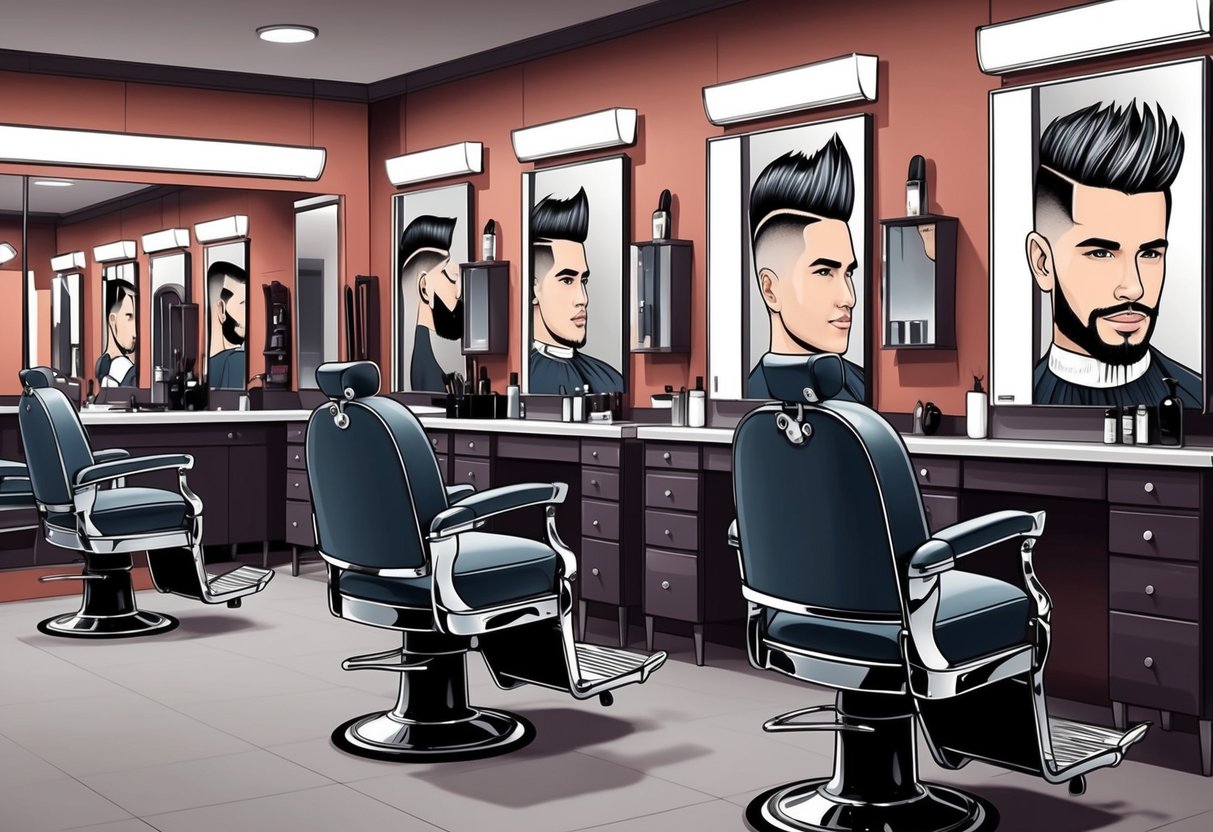
A fade haircut for men is a versatile, stylish choice that works with almost any hair type and face shape, making it one of the most popular hairstyles today. Fades are defined by hair gradually tapering from short to even shorter, blending seamlessly down the sides and back.
The result is a clean, modern look that can be customized with different lengths and transitions, fitting everything from classic to bold preferences.
Men looking to update their style will find there are several types of fade haircuts for men, such as low fade, mid fade, and high fade. Each offers a different look based on where the taper begins.
Choosing the best fade depends on face shape, hair texture, and how subtle or dramatic of a transition a person wants. Advice from professional barbers suggests that considering overall style goals can help determine the perfect fade.
Detailed guides and examples, like the ones shared in the GQ Guide to Fade Haircuts and An Illustrated Guide To The Best Fade Haircuts For Men, make it easier to communicate the desired look with a barber. They help achieve a fade that suits anyone’s personal style.
What Is a Fade Haircut?
Fade haircuts for men create a smooth transition from longer hair on the top of the head down to much shorter hair or even skin along the sides and back. This effect is achieved using precise cutting techniques that gradually blend lengths for a clean, modern style.
The Fade Effect
The defining feature of any fade haircut is the “fade” itself. The fade effect is a gradual transition in hair length, usually moving from longer strands on the crown to shorter or shaved sides near the neck.
This gradient gives the hairstyle its name and sets it apart from traditional short back and sides. Barbers achieve the fade effect by carefully tapering the hair.
The level where the shortest length begins varies, creating high fades, mid fades, and low fades. As the length shortens closer to the ears and neckline, the blending must be smooth and seamless.
This technique ensures there are no harsh lines between the different lengths, helping the fade look clean and polished. The fade effect also helps accentuate facial features and head shape.
Many men find that faded sides draw more attention to the hair on top. For a deeper dive on fade variations and what gives each look its distinct style, see this illustrated guide to fade haircuts for men.
Popular Haircut Technique
A fade haircut is a specific barbering technique that has become a staple in men’s grooming. Fades involve cutting the hair at different lengths, gradually shortening from the top down to the skin or very short stubble around the sides and back.
The objective is to create a subtle, almost invisible shift between each section of hair. Barbers use a combination of clippers, guards, and sometimes scissors to achieve this effect.
The process starts by establishing the length at the top and then blending down with progressively shorter clipper guards. The most common types of fade haircuts include the skin fade, bald fade, and taper fade.
Each type caters to different preferences based on how dramatic or subtle the fade effect is desired to be. Precision and attention to detail are critical in achieving a well-executed fade.
This essential guide to fade haircuts explains that clear communication with a skilled barber can ensure the chosen fade style fits face shape and lifestyle.
Most Popular Types of Fade Haircuts
Fade haircuts for men vary in terms of where the taper begins on the head and how dramatic the contrast is between the top and sides. Different types suit different face shapes, hair textures, and personal style preferences best.
High Fade
A high fade starts the taper significantly higher on the sides and back, typically just below the crown area. This style provides a sharp contrast between the top and sides, resulting in a bold, attention-grabbing look.
High fades work particularly well for men with thick or dense hair. The stark transition helps control volume and keeps the sides clean.
Barbers often pair high fades with styles like quiffs, pompadours, or textured crops. The high fade allows more styling flexibility on top while maintaining a crisp, modern appearance.
It’s a practical choice for men seeking a low-maintenance yet fashionable hairstyle. The dramatic nature of a high fade means maintenance is important, with regular trims needed to preserve the sharp lines.
For more on variations of high fade haircuts, check this styling guide.
Mid Fade
The mid fade, also called a medium fade, starts the gradual blend between the temples and the ears. This placement offers a balanced look that’s neither too subtle nor too striking.
Men with various hair types find mid fades adaptable, as the blend point works well with both casual and professional settings. A mid fade suits classic styles like side parts or slick backs, and it also pairs well with curly or wavy textures.
The moderate transition makes it easier to maintain than a high fade but still provides a fresh and tidy impression. Consistent trimming is required, but the regrowth is less noticeable than with more dramatic fades.
For those looking for a versatile option, the mid fade haircut is worth considering.
Low Fade
Low fade haircuts begin the blending process just above the ear and along the natural hairline. This creates a subtle effect and keeps much of the top fullness, offering a clean but understated shape.
Low fades are especially popular for men with conservative style preferences or those seeking a more gradual taper. This style complements longer hair on top and classic cuts, such as comb-overs or sleek backs.
It’s ideal for anyone who wants a modern haircut without a dramatic contrast. It works effectively with all hair textures and lengths.
Regular maintenance ensures that the fade remains neat, but the grow-out is forgiving, requiring less frequent trims. Details and variations can be explored in this fade haircuts guide.
Skin Fade
Skin fades, sometimes called bald fades, taper the hair down to bare skin along the sides and back. This creates a sharp, clean look and a striking contrast against the longer hair on top.
Barbers usually perform skin fades with a combination of clippers and razors for the closest shave possible. Skin fade haircuts are highly customizable, making them popular for pairings with everything from crew cuts to longer pompadours.
They are particularly suitable for men who want an ultra-fresh and polished finish. Maintenance is frequent, as even a little regrowth disrupts the crisp fade effect.
A detailed overview of the latest skin fade styles highlights how these haircuts can fit any face shape and personal look.



